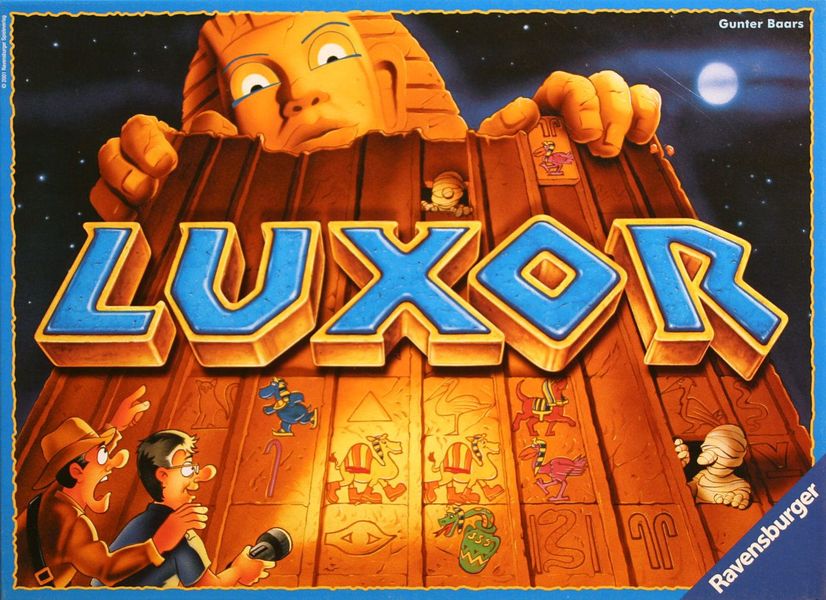Luxor (2001) Board Game
Luxor is a board game designed by Chris Mitchell and published by Ravensburger in in 2001. The game is set in ancient Egypt, where players compete to explore the tomb of the pharaoh by collecting various treasures and artifacts. With its engaging theme and strategic gameplay, Luxor has become a beloved classic among board game enthusiasts.
Game Components of Luxor
How To Setup Luxor
To set up Luxor, players start by placing the game board, which features a twisting tunnel of spaces leading into the sarcophagus chamber. The board is populated with various tiles, including treasure tiles, Osiris tiles for movement boosts, and Horus tiles for accessing better cards or keys. Each player begins with a hand of five movement cards and two active meeples (adventurers) at the entrance of the tomb. Additional meeples can be unlocked as players move deeper into the tomb.
Gameplay Mechanics and Game Objective
Player Experience
Luxor offers a smooth and engaging gameplay experience with a unique blend of hand management, movement optimization, and strategic tile placement. Players must balance their movement and resource management to collect the most valuable treasures and position their adventurers for maximum points. The game’s variability, thanks to the random tile placement at setup, ensures that no two games are the same.
Pros
Cons
Personal Thoughts on Luxor
Luxor is an excellent addition to any board game collection, especially for those looking for a game that is both fun and strategic. It is ideal for families, casual gamers, and even experienced players seeking a lighter, yet engaging, game. Its versatility in player count and the variability in gameplay make it a great choice for game nights or as a filler game. However, advanced players might find it lacks the depth they are looking for in a more complex game.
We are supported by our audience. When you purchase through links on our site, we may earn an affiliate commission, at no extra cost for you. Learn more.

